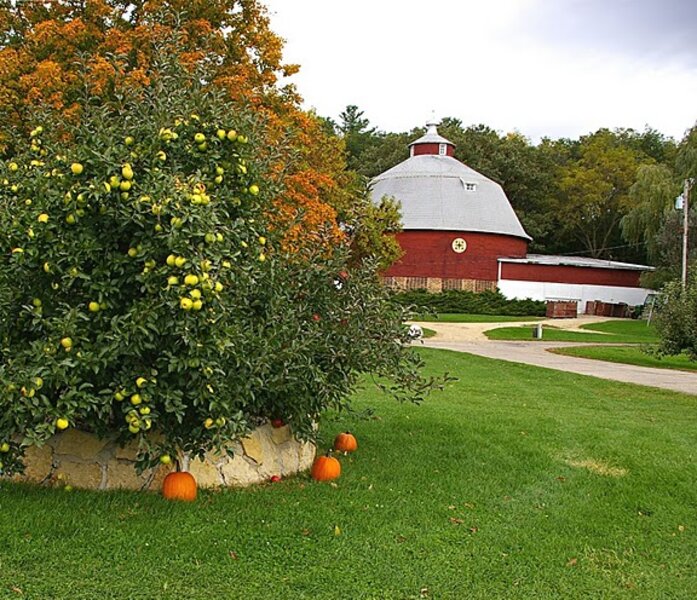Autumn apple expedition
Loading...
It’s not enough that I grow eight kinds of apples in my mini-orchard. I need more apples to get me through the winter, and fortunately, I live in the heart of apple country along the Illinois-Wisconsin border.
Late September means the start of fruit stand and apple orchard exploration on Saturdays. And it means I get to sample slices of apple cultivars I’ve never grown or eaten previously.
I love the thin slices of sharp cheddar, too, the orchards put out as palate-cleansers so that you can truly gauge an apple's flavor.
Besides pecks and bushels of apples to store in the basement for winter munching, I find loads of unique and attention-grabbing edibles and plants at various orchards and cheese stores that dot the rolling hills of rural southwestern Wisconsin.
Last fall at Ten Eyck Apple Farm in Broadhead, Wis., I found orange, green, and silver gourds that looked like long-necked swans, plus an apple variety I’d never tried.
Rootstocks for apples
Apricot apple, also known as Smokehouse, had a stunning array of nuanced flavors underpinning its crunchy acid-sweet perfect balance. Peach, citrus, and chardonnay were some of the essences I could pick out. I’m still looking for a tree of it grafted on dwarf rootstock or a graft of it to put on rootstock myself.
Most of the apple trees on my mini-orchard are on Bud 9 rootstock, which produces a tree that is under eight feet in height. The rootstock also is extremely cold-hardy, so that my trees easily survive the frigid winter.
Two trees, Pixie Crunch and Golden Delicious, are grafted on M 26 rootstock; trees are about 15 to 18 feet high and wide. Both of the larger trees are not antiques, but I loved the flavor of crunchy, sugary red Pixie Crunch so much that I had to have it.
Golden Delicious was a bargain-store find, planted because it’s a universal pollinator for most apple varieties.
If you want to know more about my antique apples, I have a new book, "The Return of Flavor: Heirloom Vegetables, Herbs and Fruits," coming out in March 2011.
Quick apple tarts, anyone?
Another treasure I found on a hunt was apple butter made without sugar. Only apples and spices were cooked down to create this thick, cinnamon-apple-nutmeg paste. I now use it as the base of apple tarts to intensify flavor.
It’s as simple as thawing and rolling a puff pastry sheet into a rectangle; crimping the edges, spreading apple butter on the crust and then layering slices of two or three kinds of apples. Shake a mixture of brown sugar, cinnamon, and nutmeg over the apple slices and bake at 350 degrees F until the crust is brown. Yummm!
Doreen Howard, the Edible Explorer, is one of nine garden writers who blog regularly at Diggin' It. If it’s edible and unusual, Doreen figures out a way to grow it in her USDA Zone 4b garden. She’ll try anything once, even smelly Durian. A former garden editor at Woman’s Day, she writes regularly for The American Gardener and The Old Farmer’s Almanac’s Garden Guide. To read more by Doreen, click here.





